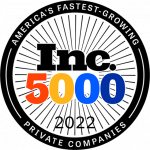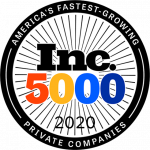
Here’s What You Will Learn in This Blog
- Introduction
- Why Move from SAP CRM to SAP S/4HANA?
- SAP Product Maintenance Timeline
- Mapping SAP CRM Capabilities to S/4HANA and CX
- SAP CRM Software Overview and Challenges
- The S/4HANA Customer Management Platform
- CRM Architecture Comparison – Legacy vs. S/4HANA
- Understanding SAP CRM Pricing vs. S/4HANA
- Unified CRM Objects in S/4HANA
- Innovations in Service and Sales within SAP S/4HANA
- Planning the CRM Transition – Greenfield vs. Brownfield
- Migration Strategy Visualization
- Real-World Use Case Example
- What’s Next After Migration?
- FAQs
- Conclusion
Introduction
Legacy systems like SAP CRM, once considered state-of-the-art, gradually succumbed to limitations such as scalability constraints, data replication inefficiencies, and challenges with siloed integrations. These drawbacks fueled the growing demand for more agile and innovative solutions. Enter SAP S/4HANA: the next-generation ERP suite, powered by the HANA in-memory database, designed to seamlessly integrate and optimize business processes across areas like finance, supply chain management, and customer engagement.
SAP S/4HANA consolidates critical business functions into a single platform, eliminating the need for separate CRM systems. Businesses across Asia have embraced S/4HANA due to its ability to deliver lower total cost of ownership, intelligent automation, and a streamlined architecture. This blog will guide you through the transition, covering the SAP CRM sunset timeline and transforming traditional skills into innovations like SAP Fiori UI and integrated analytics.
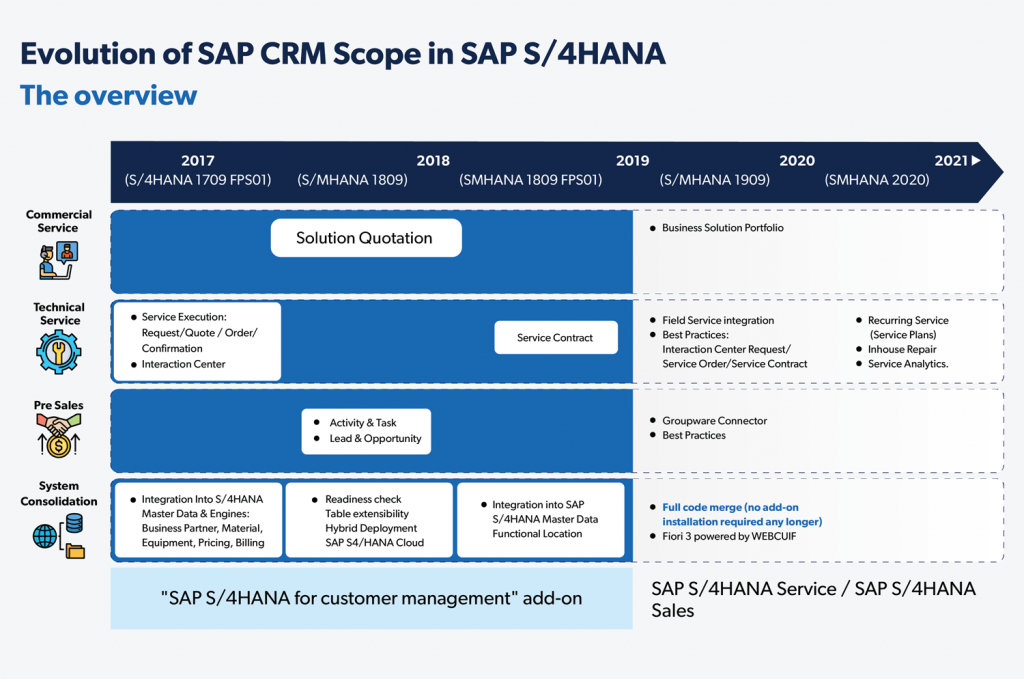
Why Move from SAP CRM to SAP S/4HANA?
Legacy SAP CRM systems, while powerful in the past, face increasing challenges: multiple data models, middleware dependencies, and high total cost of ownership. SAP S/4HANA addresses these with:
Reason to Move from SAP CRM
Multiple data models
Middleware dependencies
High total cost of ownership (TCO)
Limited real-time capabilities
Outdated user interface and experience
Fragmented customer management tools
How SAP S/4HANA Solves It
Simplified, unified data model
Native integration, no need for middleware
Streamlined architecture reduces maintenance and costs
Built-in real-time analytics powered by SAP HANA
Modern, responsive UI via SAP Fiori
Embedded customer management within the S/4HANA core
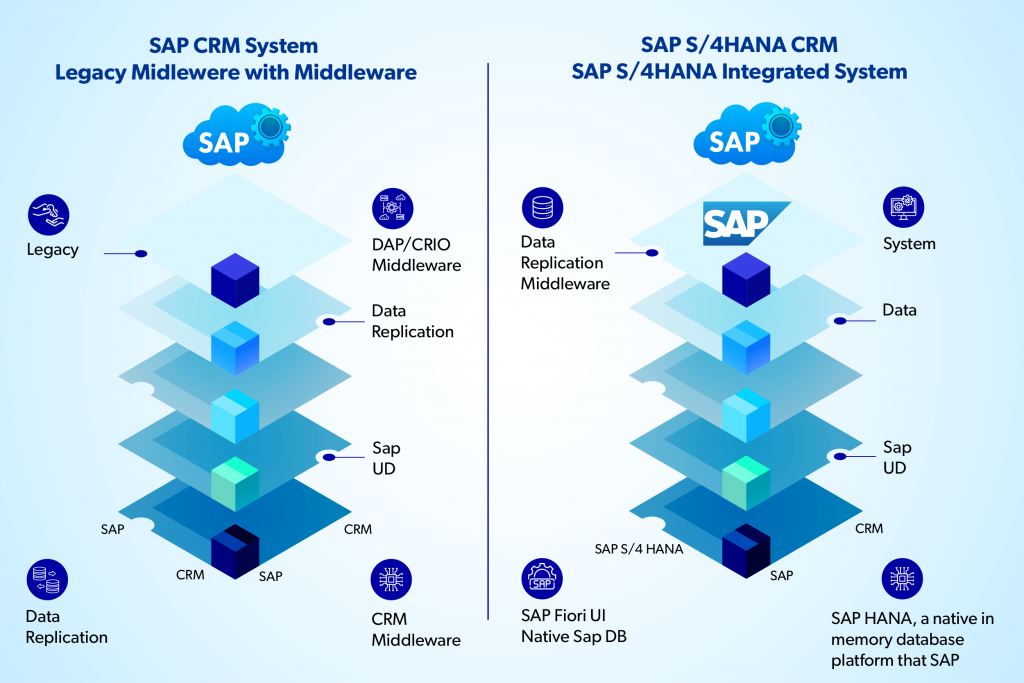
SAP Product Maintenance Timeline
The SAP Product Maintenance Timeline is a critical planning tool for organizations that still rely on older SAP systems. It clearly shows how long each SAP product will be officially supported, helping businesses make informed migration and upgrade schedule decisions.
SAP S/4HANA will receive mainstream and innovation support until 2040, assuring long-term stability and updates for enterprises that have already transitioned or plan to move soon.
SAP Business Suite Core Applications (including SAP ECC and SAP CRM):
● Mainstream Maintenance continues until the end of 2027. During this period, customers receive full support, updates, and patches.
● From 2028 to 2030, businesses can opt for Extended Maintenance. However, this comes at a 2% increase in maintenance fees, offering a cushion for those not ready to transition.
● From 2030 onwards, Customer-Specific Maintenance is available. This support is limited in scope and focuses primarily on critical bug fixes and customer-specific needs without regular updates or innovations.
The below imageuses a segmented horizontal timeline to illustrate these support phases in a visually clear format. Each phase is color-coded and labeled, making it easy for IT teams and decision-makers to assess risks and deadlines. Businesses still on SAP CRM or ECC should use this timeline to plan their migration to SAP S/4HANA well before losing mainstream support, ensuring continuity and access to innovation.
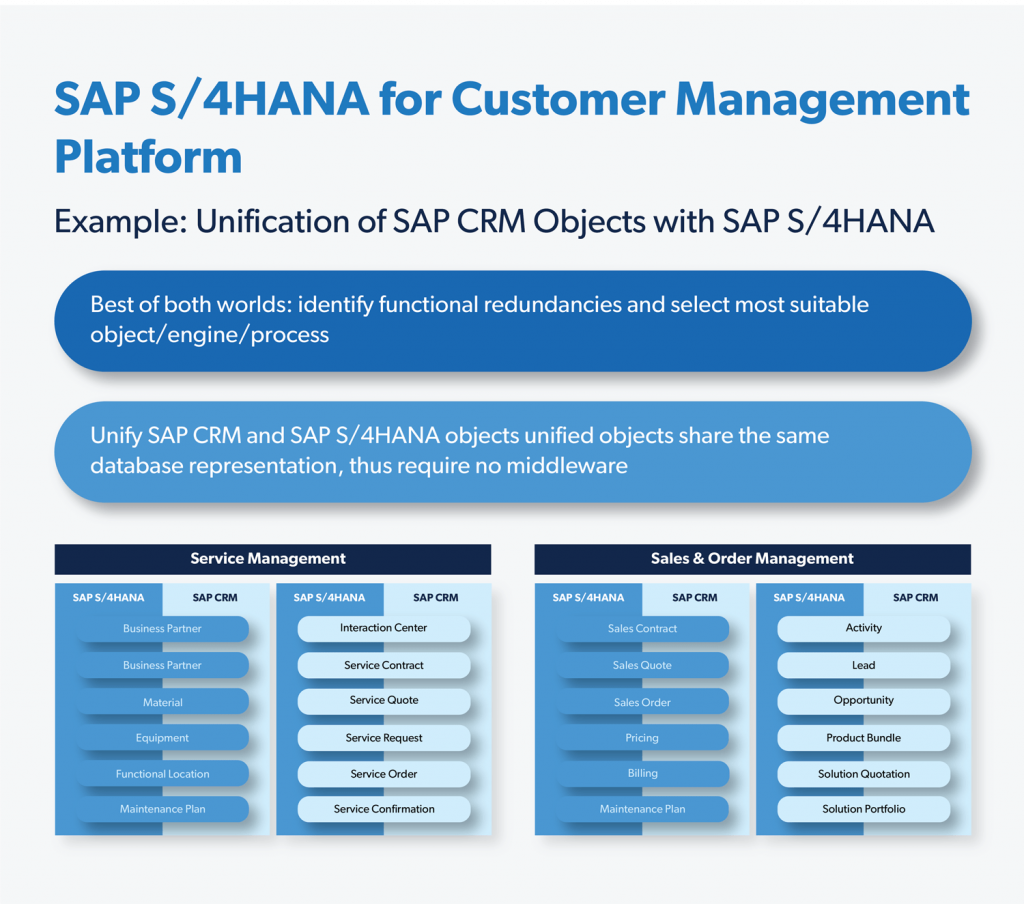
Mapping SAP CRM Capabilities to S/4HANA and CX
SAP provides a modular roadmap:
Order Management → SAP S/4HANA Core
Marketing → SAP CX (Customer Experience)
Remaining capabilities → SAP S/4HANA CM (Customer Management)
This visual roadmap provides a clear, function-by-function breakdown of where each SAP CRM capability should be relocated within the new SAP ecosystem. It distinguishes whether processes like order management, marketing, or customer service are best handled in SAP S/4HANA Core, SAP Customer Experience (CX), or the Customer Management module. Doing so ensures that critical business logic is preserved while upgrading to modern platforms. This enables a smoother migration without sacrificing operational continuity or customization.
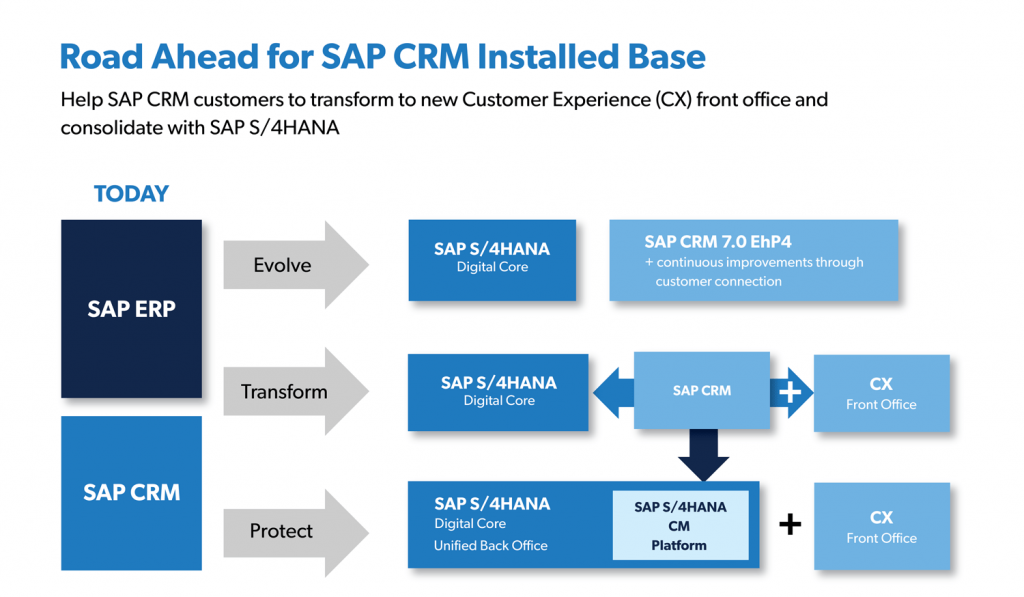
SAP CRM Software Overview and Challenges
● SAP CRM supported customer-facing functions like sales, service, and marketing through separate modules.
● It relied heavily on middleware (e.g., CRM Middleware, PI/PO), making integrations complex and causing slower data updates.
● This architecture increased operational overhead and made real-time visibility difficult.
● SAP S/4HANA eliminates the need for middleware by embedding CRM capabilities natively within the core system.
● It provides real-time analytics, a modern Fiori-based user interface, and a more streamlined, efficient experience for end-users.
The S/4HANA Customer Management Platform
This platform integrates CRM capabilities directly into the S/4HANA stack:
No Middleware: Simplified architecture
SAP Fiori UI: Based on CRM WebUI
SAP HANA: Accelerated performance
Non-Disruptive Migration: Build on your current investments
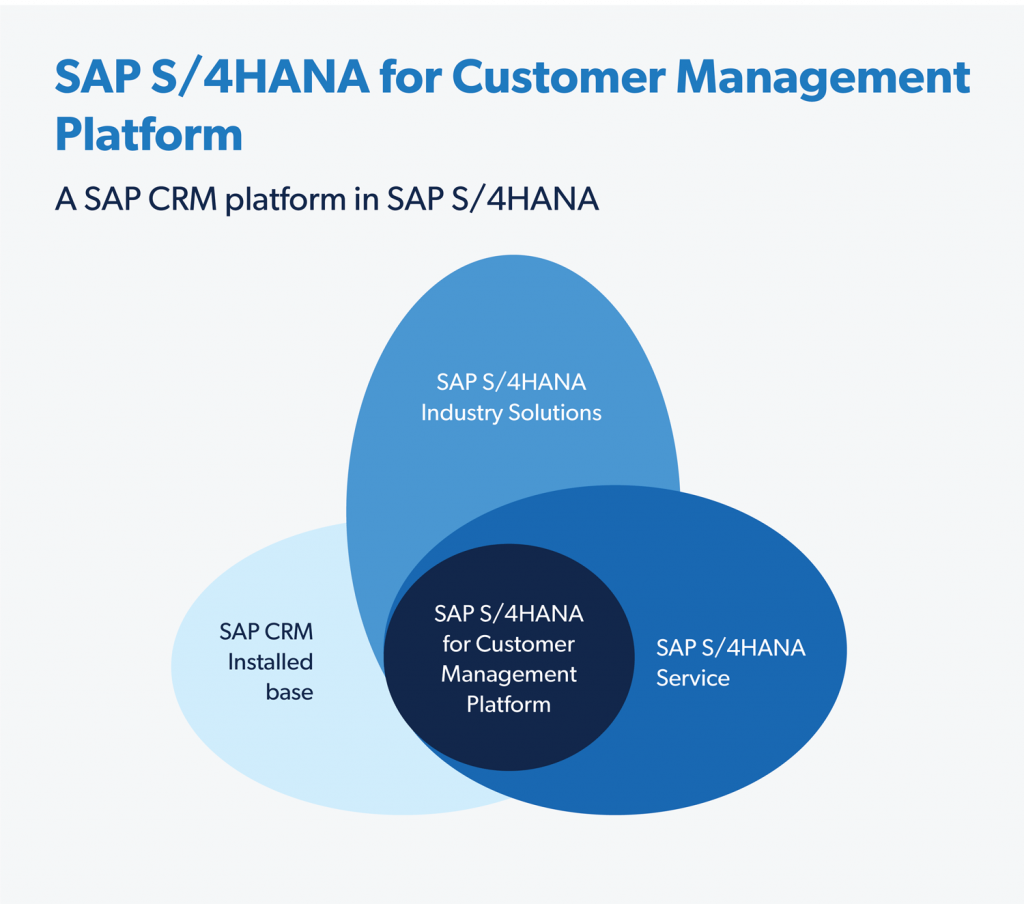
CRM Architecture Comparison – Legacy vs. S/4HANA
● Using a modular yet siloed approach, SAP CRM was vital in managing customer interactions across departments like sales, service, and marketing.
● However, it relied on middleware for data synchronization between systems, which often led to delays, integration issues, and a higher total cost of ownership.
● These limitations made it challenging to achieve the real-time responsiveness that modern customer engagement demands.
● SAP S/4HANA overcomes these challenges by embedding CRM functions directly within its core, removing the need for middleware entirely.
● With innovations like SAP Fiori UI and native SAP HANA analytics, businesses gain a more agile, intuitive, and performance-driven platform to manage customer relationships effectively.
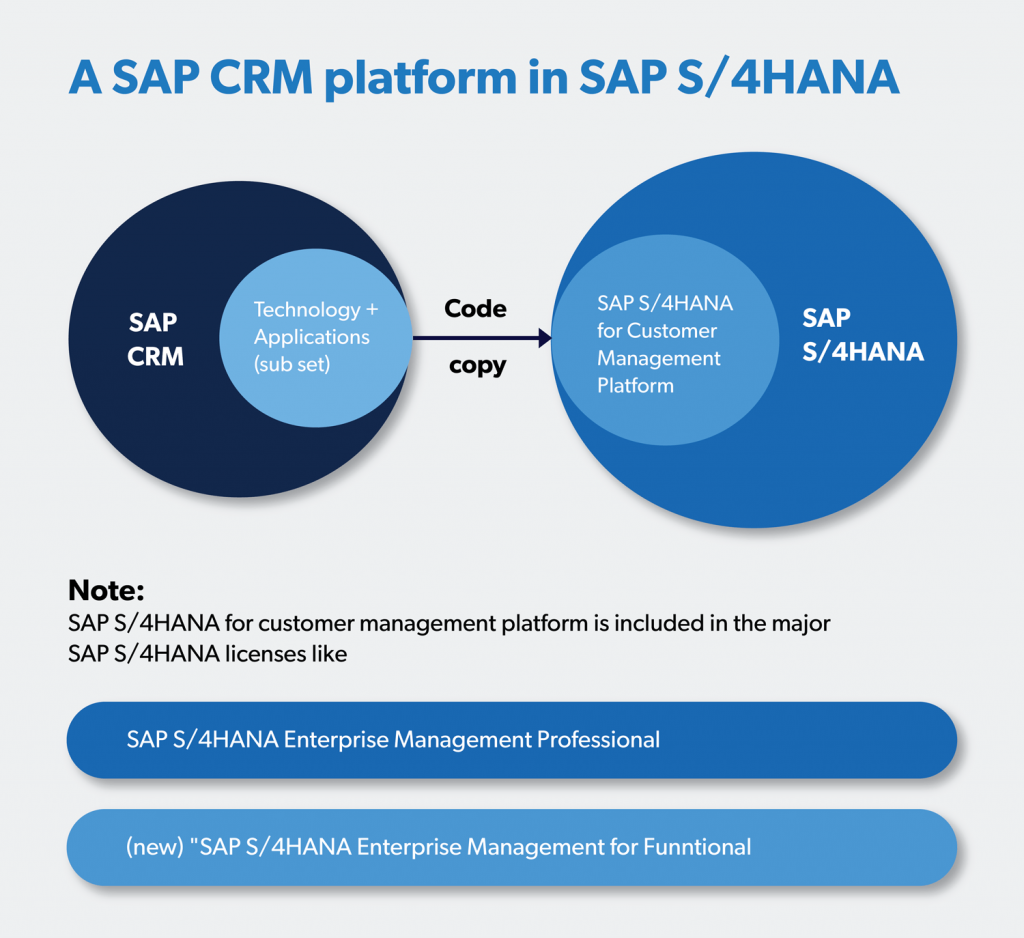
Understanding SAP CRM Pricing vs. S/4HANA
● SAP CRM followed a traditional licensing model. Core features were bundled, but many advanced functionalities—like service, marketing, and analytics—required additional modules with separate costs. This often led to complex licensing structures and higher cumulative expenses over time.
● In contrast, SAP S/4HANA adopts a modular pricing approach based on actual usage and digital access, allowing organizations to pay for their needs. With integrated capabilities and fewer standalone components, businesses benefit from lower long-term total cost of ownership (TCO) and simplified contract management.
Unified CRM Objects in S/4HANA
SAP S/4HANA centralizes key CRM components-customers, Transactions, and Service Requests-within a single digital platform. This harmonization means businesses operate with a unified view of customer data instead of managing these elements across disconnected systems.
Benefits include:
● Enhanced accuracy by eliminating redundant data entries.
● Streamlined operations through integrated processes.
● Improved analytics, since all data is captured in one place and available in real time.
● Reduced duplication and maintenance overhead lead to lower IT costs and faster decision-making.
The image visually demonstrates this consolidation, showing individual data elements flowing into the SAP S/4HANA core with supporting labels like “Harmonized Data” and “Better Analytics.” It represents how the platform is a single source of truth for CRM operations.
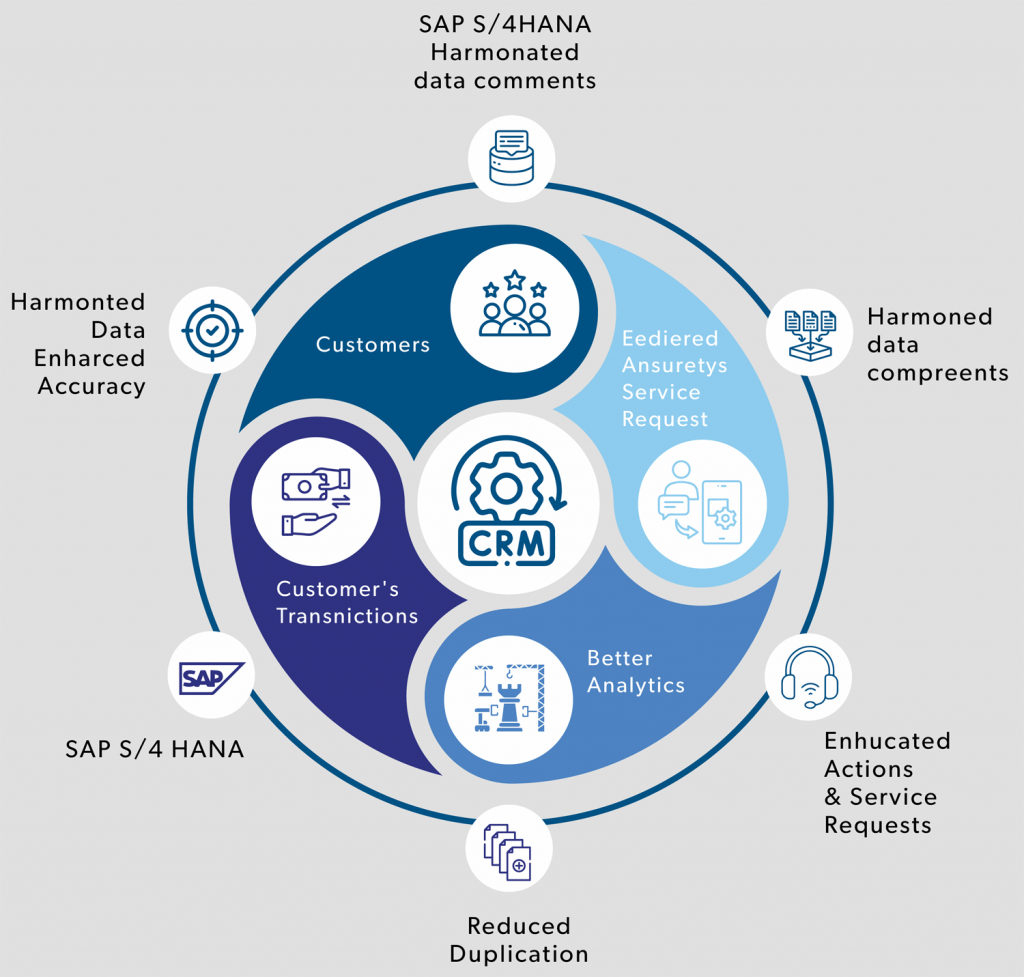
Service and Sales Innovations inside SAP S/4HANA
Service: SAP S/4HANA includes an integrated service module with omnichannel features. Customers can engage with businesses in real-time through email, chat, or phone. Its functions, such as offering proactive scheduling, make an appointment that suits both the technician’s availability and customer preferences for the asset location. These enhancements reduce wait times, improve service efficiency, and elevate customer satisfaction. Added tools let organizations monitor key performance indicators along with customer sentiment throughout a product or service cycle.
Sales: With real-time sales analytics, sales team gets immediate insight into both pipeline performance and the behavior of customers. Mobile tools empower sales reps in the field with access to pricing, order status, and customer history. Real-time pricing and discount approvals and timely respond mean that deal cycles are quicker. Adding all these tools together results in a nimbler more intelligent sales operation.
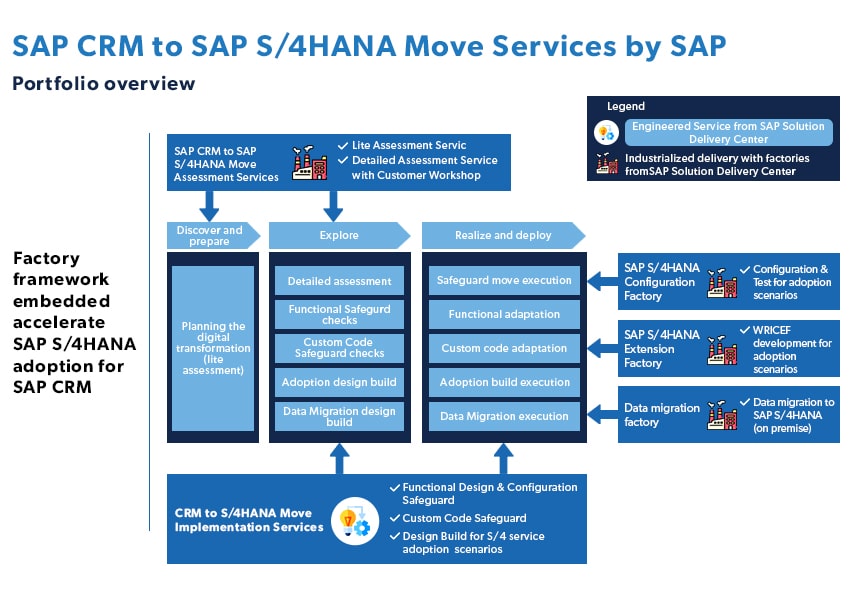
Planning the CRM Transition – Greenfield vs. Brownfield
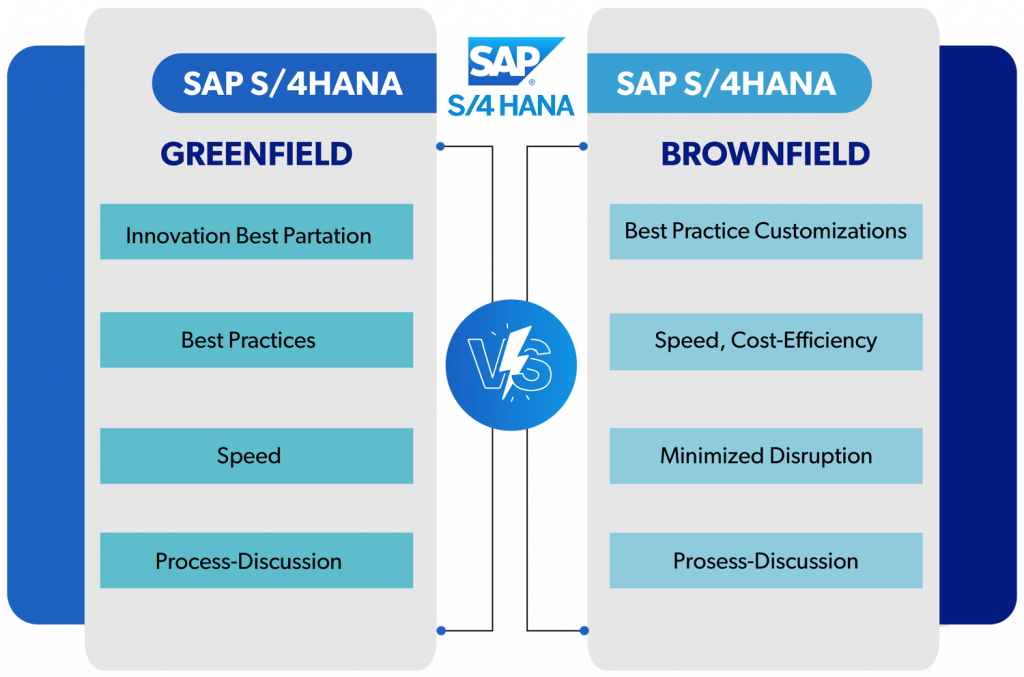
Migration Strategy Visualization
The picture below provide a side-by-side comparison of Greenfield and Brownfield transition strategies. These illustrate the pros and cons of each approach as well as what it is best suited for. The graphic also introduces SAP Conversion Services: automated tools, expert assessments, along with migration blueprints. These services simplify migration’s technical and functional complexity, enabling organizations to move confidently and precisely.
Real-World Use Case Example
A large transportation provider chose the Brownfield transition strategy for moving from SAP CRM to SAP S/4HANA and found success. They preserved key business logic and custom CRM workflows by picking them up and dropping them into the new platform. Once migrated, they introduced departmental BI (embedded analytics), allowing business users to see actionable insights from operating data in real-time. The transition resulted in a 25 % reduction of middleware and integration costs – showing the fiscal as well as operational impact on any well- prepared migration project.
What’s Next After Migration?
Once the migration to SAP S/4HANA is complete, organizations can tap into its advanced technologies:
● Machine Learning (ML): Helps predict customer churn, prioritize leads, and automate decision-making in sales and service.
● Embedded Analytics: Offers powerful reporting tools directly within transactional screens, reducing the need for external BI platforms.
● Third-Party UI Integration: APIs and Fiori extensions allow seamless connectivity with portals, mobile apps, and legacy systems.
● Robotic Process Automation (RPA): Automates repetitive CRM tasks like data entry, ticket routing, and follow-up reminders, freeing teams to focus on value-added activities.
These innovations future-proof your CRM strategy and drive continuous improvement across the customer lifecycle.
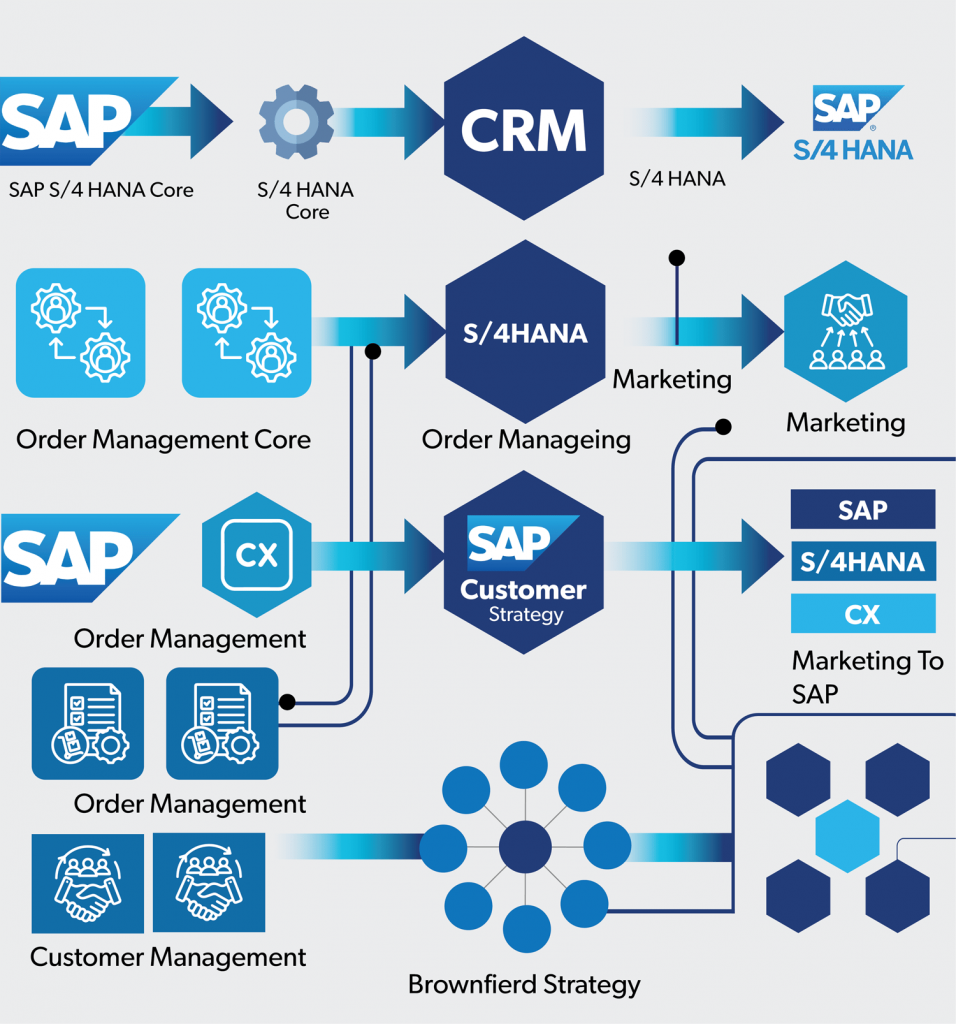
FAQs
Yes, mainstream support ends by 2027, with phased extensions until 2030.
Yes. SAP supports partial migrations through modular architecture.
Expect higher costs for extended support; SAP S/4HANA offers better value in the long term.
Yes, Fiori offers a modern, responsive design based on user roles.
Timelines vary; brownfield can take 6–12 months, and greenfield may take longer depending on complexity.
Unified architecture, real-time data, no middleware, and future-ready innovations.
Conclusion
Transitioning from SAP CRM to SAP S/4HANA isn’t just a technical upgrade- it’s a transformation in delivering customer experiences. With integrated platforms, real-time insights, and streamlined processes, S/4HANA ensures your CRM strategy is ready for the future.
Be Future-ready CRM starts with SAP S/4HANA.
About the Author

Praveen Sharma is a distinguished digital and SAP S/4HANA techno-functional transformation expert with over 25 years of experience. As a Delivery Lead, he excels in project planning, execution, and governance, while building and maintaining robust customer relationships. Praveen leverages the latest SAP technologies, including SAP S/4HANA, SAP Business Technology Platform (BTP), and SAP Analytics Cloud, to help clients improve operations, enhance efficiency, and reduce costs.


